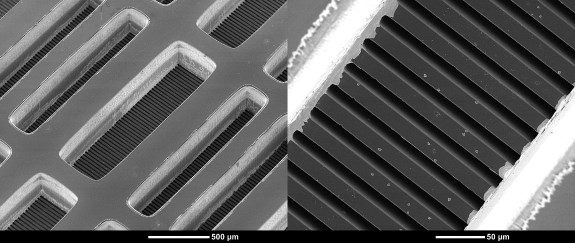The feat is achieved by changing the design of microelectronics to feature an intricate series of tiny microchannels within the chip itself. These microchannels are just a few microns wide and use HFE-7100, an electrically insulating commercially available fluid. The fluid is pumped over the heat source, it boils inside the microchannels and this results in much greater cooling efficiency than traditional cooling methods with heatsinks or waterblocks that are attached to a chip's heatspreader.
Besides applications in supercomputers and high-performance radar electronics, this DARPA-funded research could also be a solution for the cooling problems of future 3D-stacked CPUs or GPUs.
“Allowing the liquid to boil dramatically increases how much heat can be removed, compared to simply heating a liquid to below its boiling point,” he said.
The team created an elaborate testing apparatus that simulates the heat generated by real devices. An array of heaters and temperature sensors allow the researchers to test the system under a range of conditions, including the effects of hot spots. The testing system was fabricated at the Birck Nanotechnology Center.
The new approach improves efficiency by eliminating the need to attach cooling devices to chips.
“Any time you are attaching heat sinks to the chip there are a lot of resistances and inefficiencies associated with that interface,” Garimella said.
This interfacial, or “parasitic,” thermal resistance limits the performance of heat sinks.
“We are going to a technology that eliminates those interfaces because the cooling is occurring inside the chips,” Weibel said.
Using ultra-small channels allows for high performance.
